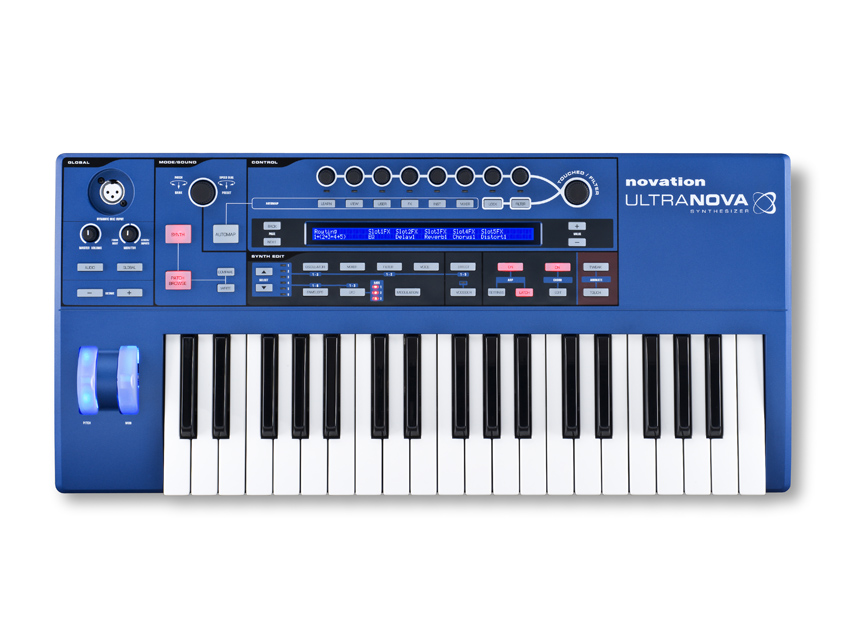Novation UltraNova synth announced

Novation has been busy with its MIDI controllers for the past few years, but now it's returning to its hardware synth routes with the launch of the UltraNova.
Taking its lead from the venerable SuperNova and SuperNova II instruments, this is an analogue modelling synth that is notable for its Touch and Tweak features. The former makes the eight rotary encoders "receptive to finger contact" for increased modulation possibilities, while the latter enables you to group your favourite parameters to said encoders for real-time patch editing.
The headline specs are as follows:
- Brand new, single-part synth engine with up to 18 voices, 14 filter types, 36 wavetables and five effect slots.
- Eight assignable touch-sensitive rotary controllers, with one large knob to instantly give you fine control of any parameter.
- Touch and Tweak controls enable totally new sound-shaping and performance options: Trigger envelopes, LFOs, filters and effects just by touching the encoders.
- A tried and tested, stage-ready 37-note keybed with aftertouch, bus power from USB, a 12-band vocoder (with included dynamic gooseneck mic), and loads of controls makes UltraNova the perfect stage or studio synth.
- Free software plug-in editor gives you full visual editing control. The included Patch Librarian lets you organise, store and share unlimited patches.
- Built-in two-in, four-out USB audio interface. Stream high-quality audio to and from a host computer and control your monitor mix, all from UltraNova.
- Full connectivity for stage and studio. Balanced line-level and stereo S/PDIF outputs, plus MIDI In, Out and Thru ports.
UltraNova will be available in the fourth quarter of 2010 with an RRP of £587 (estimated street price £500). Look out for a MusicRadar review on its release.
Want all the hottest music and gear news, reviews, deals, features and more, direct to your inbox? Sign up here.

I’m the Deputy Editor of MusicRadar, having worked on the site since its launch in 2007. I previously spent eight years working on our sister magazine, Computer Music. I’ve been playing the piano, gigging in bands and failing to finish tracks at home for more than 30 years, 24 of which I’ve also spent writing about music and the ever-changing technology used to make it.